Recognizing Native American Heritage, Veteran’s Day, Geography Awareness and More in November
There’s plenty to celebrate this month from Native American Heritage to Veteran’s Day and Statistics in Schools (SIS) has the data-filled resources to help you do that. From the largest tribal groupings and the percentage of veterans in the U.S. to the total number of fast-food restaurants in your state, use census data to help boost the statistical and civic literacy skills of your students.
Native American Heritage Month (NAHM)
During Native American Heritage Month, share SIS resources with your students and learn more about this population including educational attainment, median age, and types of businesses owned.
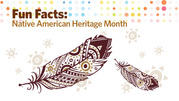
NAHM Fun Facts
Did you know that in 2023 the median age of the American Indian and Alaska Native population was 32 or that approximately 15% had a bachelor’s degree? Explore the Native American Heritage Month Fun Facts with your students to discover more data facts and use the suggested activity ideas in the teaching guide to take learning a step further. For example, elementary school students can review the American Indian and Alaska Native-Owned Businesses section and brainstorm a business they would like to own one day and explain why. Older students can pretend they are journalists and use information from the Fun Facts to share what they learn about Native American Heritage Month.
Continue the fun with our Native American Heritage Month Kahoot! game.
|

Native American Dwellings Activity
With this activity, students can look at historical images of three types of Native American dwellings — teepees, pueblo adobe structures and hogans – and discuss their observations. For example, you can lead a class discussion about who used the homes; materials used to make them and why; and what the students think it was like living in them. Then, students can draw an illustration and write about each one.
For older students, share the Exploring Federal Policy About Native Americans in the Late 1800s high school activity.
|
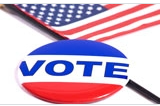
Election Day – November 5
Do you think there were more male or female voters in the 2020 elections? Share our Voting Trends in America history activity with students to help them learn about the importance of elections and voting. Students can compare, analyze, and evaluate voting data and write a response to the question, “Who votes in American elections?” For example, students can look at Census Bureau data on the percentage of voters who voted by race and compare it to those who registered but did not vote. This is a great way to bring awareness to this day – and how important it is to participate in elections!
|
Veterans Day – November 11
Show honor with these resources that highlight data related to this special day.
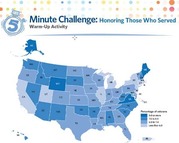
Honoring Those Who Served Warm-up Activity
This resource helps teach students how to identify states/territories with the largest and smallest percentages of veterans. Discover how many veterans live in your state and compare it to other states. Have a class discussion on potential reasons some states have more or fewer veterans than others.
|
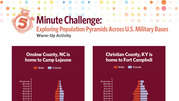
Population Pyramids Across U.S. Military Bases Warm-up Activity
For this activity, students look at population pyramids that represent the shape of two U.S. military bases (one in Onslow County, North Carolina, and the other in Christian County, Kentucky). Then students can identify things they notice about the population in each pyramid and have a class discussion about their observations.
|
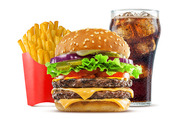
National Fast Food Day – November 16
Did you know there were 265,179 fast food restaurants in the United States in 2022? That’s up from 213,469 in 2010. Challenge students to learn how many are in your state using the State Facts for Students data tool. Students can also discover facts such as the total population of 8 to 14 year olds; how U.S. workers commute; the total number of amusements park; and more.
|

Game and Puzzle Week – The Last week of November
Have fun and learn while playing a game from the collection of U.S. Census Bureau’s Kahoot! games. From American history and U.S. holidays to U.S. sports and businesses, these games make learning with census data enjoyable. Students can learn facts such as which state was the most populous in 1790 and which state raised the most turkeys (33.5 million). See how well your students know the nation!
|
Small Business Saturday – November 30
Interact with your students using these business-related resources to recognize this day!

Adopting an Entrepreneurial Mindset - Using Census Data for Business
Did you know that the median household income for New York County, New York was $93,956? As an entrepreneur, why is this information beneficial to know? Challenge your students to adopt an entrepreneurial mindset and learn more with this activity. Students can use the Census Business Builder data tool to access data on the total population, number of business establishments, and median household income to determine the best place to open a gas station. Students will also determine how the tool can be helpful to entrepreneurs.
|
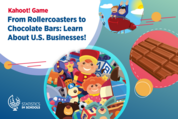
From Rollercoasters to Chocolate Bars: Learn About U.S. Businesses Kahoot! Game
How many amusement parks are there in the United States? Test your students’ knowledge about this and other kid-friendly data with this fun-filled game. Learn more business-related statistics such as the number of U.S. toy stores, zoos and botanical gardens, candy and nut stores and more. Who will land first place?
|
Activity of the Month
SIS has a variety of standards-based activities for all grade levels. In this section of our newsletter, an SIS staff member has handpicked one of their favorites for you to explore.

The Art of Persuasion: Using Census Data to Influence Others Activity
Have students research census data and create an advertisement to persuade others to come to their city. Using the QuickFacts data tool, students can find information on businesses, cities and towns, family and living arrangements, and more!
Students should keep in mind:
- Who they are (state attorney/mayor, etc.).
- Their target audience (families, doctors, business owners).
- Why they are trying to persuade this group of people.
- The advertising format (brochure, tv or newspaper ad, etc.)
Why is this activity a staff favorite?
In addition to giving students the opportunity to strengthen persuasive and advertising techniques and conduct research on a city of their choice, this resource can also help students think about their future. For example, students aspiring to be a real estate agent can create a television ad convincing families to move to a city. Another example is a city official who aspires to improve their childhood community by trying to convince nonprofits or community organizations to open branches in their city.
This is a good way to put into practice the process of persuasion. This can be beneficial because students can take what they are practicing in the activity and apply it to their daily lives – the true art of persuasion!
|
Plan ahead: Check out our resources for National STEM/STEAM Day (November 8), Geography Awareness Week (November 15-19), Thanksgiving (November 28) Holiday Season, Wreaths Across America (December 19) and Crossword Puzzle Day (December 21). Use our Monthly Highlights page to plan your month.
|